
The Teatro Colón is the main opera house in Buenos Aires, Argentina. It is considered one of the ten best opera houses in the world by National Geographic. According to a survey carried out by the acoustics expert Leo Beranek among leading international opera and orchestra directors, the Teatro Colón has the room with the best acoustics for opera and the second best for concerts in the world.

Avenida Corrientes is one of the principal thoroughfares of the Argentine capital of Buenos Aires. The street is intimately tied to the tango and the porteño sense of identity. Like the parallel avenues Santa Fe, Córdoba, and San Juan, it takes its name from one of the Provinces of Argentina.
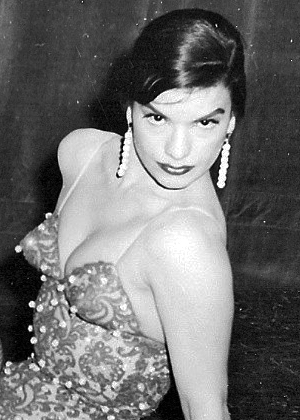
Nélida Roca, was one of the first showbusiness divas and sex symbols of Argentina. She was an actress, dancer, singer, model and theater supervedette.

Laura Ana "Tita" Merello was an Argentine film actress, tango dancer and singer of the Golden Age of Argentine Cinema (1940–1960). In her six decades in Argentine entertainment, at the time of her death, she had filmed over thirty movies, premiered twenty plays, had nine television appearances, completed three radio series and had had countless appearances in print media. She was one of the singers who emerged in the 1920s along with Azucena Maizani, Libertad Lamarque, Ada Falcón, and Rosita Quiroga, who created the female voices of tango. She was primarily remembered for the songs "Se dice de mí" and "La milonga y yo".
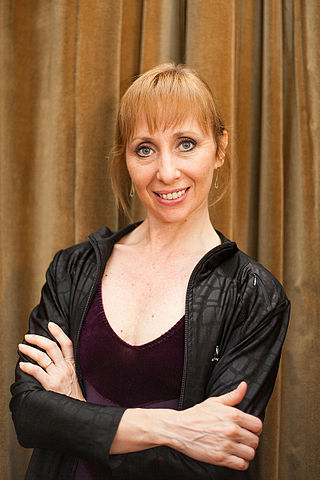
Eleonora Cassano is an Argentine ballet dancer and teacher. She is known for being the dancing partner of Julio Bocca since 1989.

The Teatro Nacional Cervantes in Buenos Aires is the national stage and comedy theatre of Argentina.

The Avenida Theatre is a theatre in Buenos Aires, Argentina.
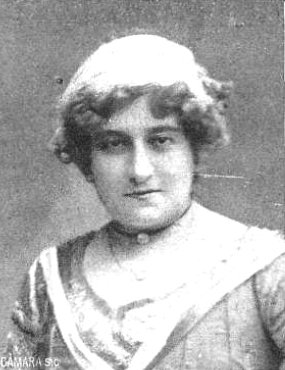
María Ana de Jesús Guerrero Torija, better known as María Guerrero, was a prominent Spanish theatre actress, producer and director.

Griselda Gambaro is an Argentine writer, whose novels, plays, short stories, story tales, essays and novels for teenagers often concern the political violence in her home country that would develop into the Dirty War. One recurring theme is the desaparecidos and the attempts to recover their bodies and memorialize them. Her novel Ganarse la muerte was banned by the government because of the obvious political message.

Mabel Gladys Manzotti was an Argentine film, stage and television actress. Her film credits included Besos en la Frente, while her telenovela credits included roles in Vidas robadas. She played Bochita in the 1960s Argentine television series, El botón, opposite Jorge Porcel and Alberto Olmedo.

Mónica Villa is an Argentine actress of stage, screen, and TV, as well as a researcher and educator. She earned a Best Actress award for her role as "Susana" in cult classic "Esperando la Carroza at the 1985 Festival de Cine Iberoamericano, in Huelva, Spain. She won an ACE Golden award for best leading actress in the 2002 comedy "Ojos traidores", a 2004 Premios Trinidad Guevara for best Actress of a Repertoire Company, a Premios Carlos de Oro for her 2011 performance as best lead actress in the theater production "Jardín De Otoño", and in 2015 a Premios Estrella de Mar for Best Female Performance in a Repertoire Company for "La Nona". In addition, she has been nominated for a Best Actress in a TV Special for the 2003 Premios Martín Fierro, making her acting work recognized in all three major media.

Carmen Lamas was a Spanish-born tango singer, and the first Spanish actress who made her career in Argentina. Lamas debuted in 1921 in a cast headed by his father, Miguel Lamas, Spanish actor and director. She was one of the first important figures of the Teatro Maipo, a vedette in the group known at that time as "Primera triple".

Lida Martinoli (1914–1991) was an Argentine dancer, choreographer, and theatre performer in Buenos Aires. Born in Rosario, Santa Fe in 1914, she was the daughter of the artists Fanny Montiano and Carlos Martinoli. She studied ballet at La Scala in Milan before returning to Buenos Aires in 1932. She joined the corps de ballet of the Teatro Colón, where she danced until 1956. At the Teatro Colón, she served as prima ballerina during the 1940s, dancing the choreographies of Vaslav Nijinsky and Margarita Wallmann and starring in her version of The Nutcracker with Michael Borovski and Maria Ruvanova. In 1953, as prima ballerina for Teatro Colón, she performed at Carnegie Hall in her North American debut. When she retired from dancing, Martinoli began to choreograph, and is known for her kitschy and outlandish dances - the choreography for "La Leprosa" required the actor to stick ham to themselves that fell off during the dance, imitating the symptoms of leprosy. She died in Santa Fe in 1991. Screenwriters Kado Kostzer and Afredo Rodriguez Arias wrote the play "Familie d'Artistes" about Lida and the Martinoli family in 1989, which was staged at the Teatro Maipo in Buenos Aires in 1991.

Regina Isabel Luisa Pacini Quintero was a Portuguese lyric soprano, and First Lady of Argentina as the wife of Marcelo Torcuato de Alvear.

Dora Gález (1903–2002) was a pioneering Argentine actress and vedette. She was one of the first stars of the Maipo Theater, and given the title of the "nightingale of the house". Other early co-stars with whom she worked were Carmen Lamas, Gloria Guzmán and Tita Merello. In 1924, she was in the cast of Roberto L. Cayol's Revue ¿Quién dijo miedo? which featured music by Arturo De Bassi along with Iris Marga, César Fiaschi, Carmen Lamas, and the debut performance of Tita Merello.
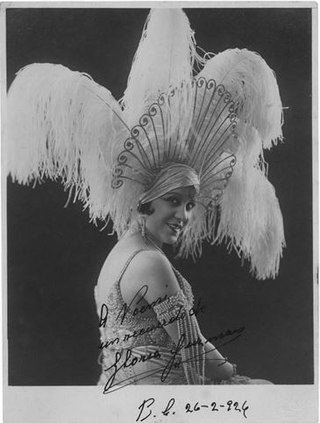
Gloria Guzmán (1902–1979) was a Spanish-born Argentine vedette and actress who performed in the early Argentine theater.
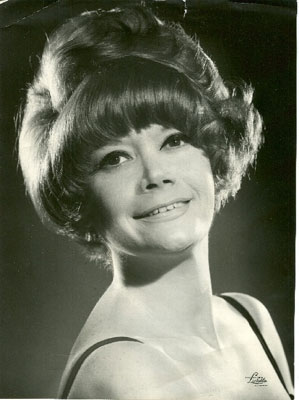
María Eugenia Luna, also known as Jovita Luna, was an Argentinian singer and actress.
Vicky Astori, known as Bice or Bicky Astori, was an Italian actress who made her career in Argentina.

Aída Olivier was an Argentine dancer, vedette and actress of cinema and theatre.

Victoria Cuenca was an Argentine film actress during the country's Golden Age of cinema, as well as a theatre actress and a vedette.

















